PNNL @ APS March 2024
Scientists from PNNL will be presenting the latest research at the American Physical Society's annual March meeting
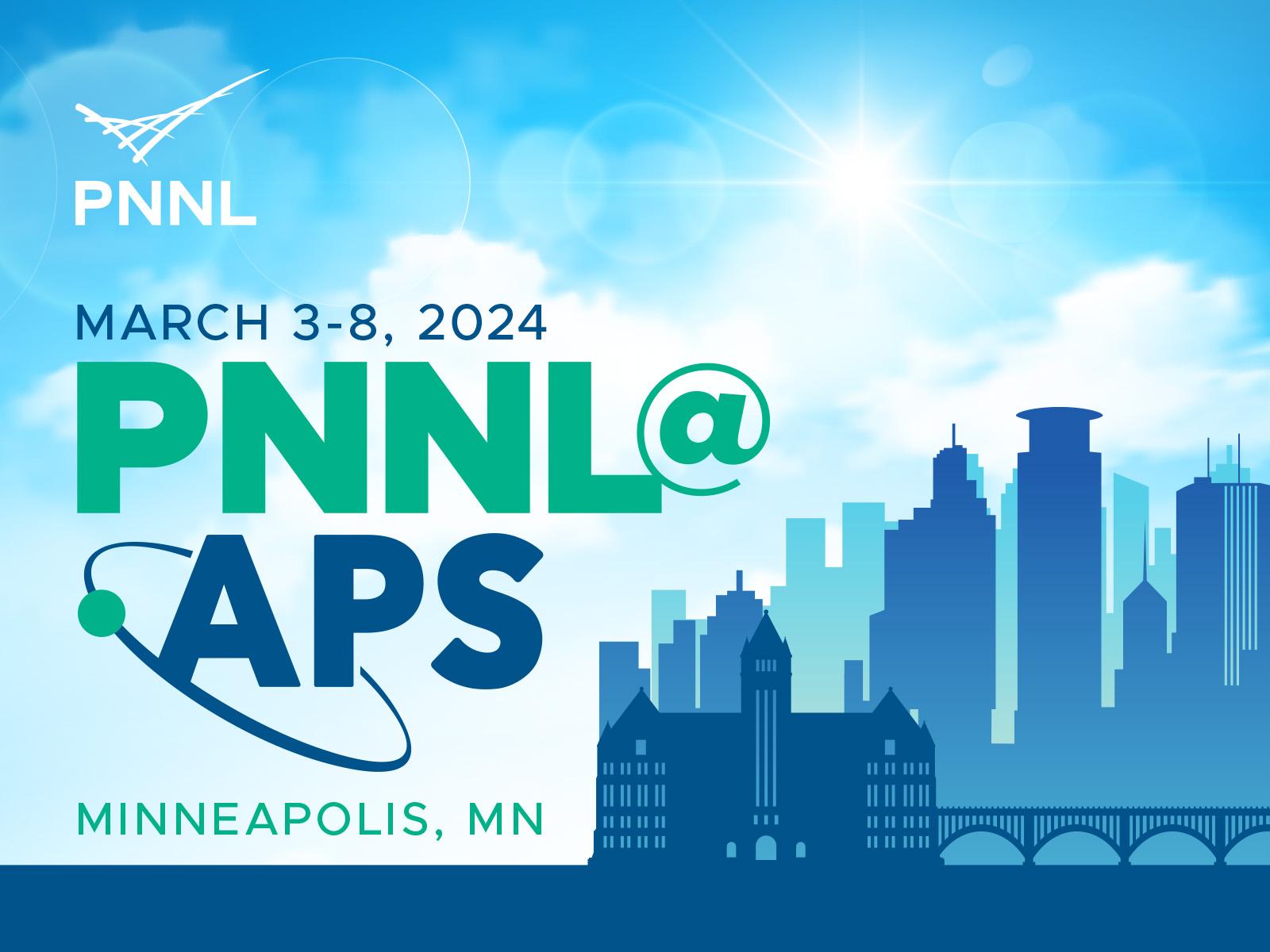
Minneapolis, MN
Presentations, workshops, and chaired sessions on Monday, March 4
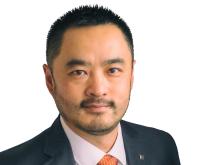
Attosecond Water Radiolysis Dynamics: Modeling the X-ray Pump/X-ray Probe Experiment
Presentation: 8:36 – 9:18 a.m. CST, Location: 103F
Session: A40: Probing Structure and Dynamics with XUV and X-Ray Light: Ultrafast Studies of Photocatalysis and Water Radiolysis
PNNL Presenter: Xiaosong Li (UW joint appointee)
Summary: Ultrafast tunable X-ray pump/X-ray probe methodology allows us to dissect the entire radiolysis process from inception onwards. A tunable X-ray pump selects molecular orbitals being ionized and a tunable X-ray probe interrogates, on a site-specific basis, migration of holes and ensuing chemical reactions. This talk focuses on computational studies of the X-ray pump/X-ray probe experiment. READ MORE.
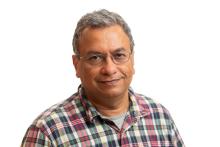
Theoretical Explorations in X-ray Spectroscopies and Ultrafast Dynamics
Presentation: 9:12 – 9:48 a.m. CST, Location: 103F
Session: A40: Probing Structure and Dynamics with XUV and X-Ray Light: Ultrafast Studies of Photocatalysis and Water Radiolysis
PNNL Presenter: Niranjan Govind
Summary: Probing and controlling the flow of charge and dynamics within a molecule following photoexcitation is a fundamental requirement for the targeted synthesis of the next generation of molecules and materials designed for artificial light harvesting, photochemical energy conversion, and photocatalysis. X-rays, by virtue of their atomic specificity, are ideal probes to study ultrafast processes, including electron and proton transfers and couplings in molecules in non-equilibrium conditions and emerging X-ray free electron laser sources offer novel probes of chemical systems, in the gas and condensed phases, with unprecedented spatial and temporal resolutions. READ MORE.
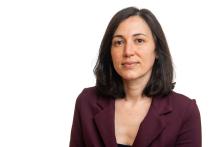
Tracking photoinduced electron and proton transfer and the coupled solvent reorganization with femtosecond X-rays
Presentation: 12:42 – 1:18 p.m. CST, Location: 103F
Session: B40: Probing Structure and Dynamics with XUV and X-Ray Light: Chemical Dynamics in Molecular and Plasmonic Systems
PNNL Presenter: Elisa Biasin
Summary: Light-induced electron transfer and proton-coupled electron-transfer reactions are ubiquitous in chemistry, playing an important role in both natural and artificial solar energy conversion. To advance these applications, it is vital to achieve a molecular-level understanding of this important class of reactions. READ MORE.

Quantum Memory: a missing piece in quantum computing units
Presentation: 2:18 – 2:30 p.m. CST, Location: 200IJ
Session: B51: Heterogeneous Design for Quantum Applications
PNNL Presenter: Chenxu Liu
PNNL Author(s): Chenxu Liu, Samuel A Stein, Ang Li
Summary: Memory is an indispensable component in classical computing systems. While the development of quantum computing is still in its early stages, current quantum processing units mainly function as quantum registers. READ MORE.
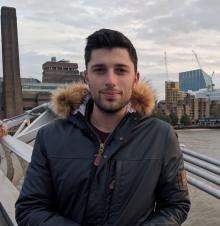
D50: Holistic QCVV Techniques and Shadow Tomography
Session: 3:00 – 6:00 p.m. CST, Location: 200H
PNNL Session Chair: Samuel Stein
Summary: PNNL researcher Samuel Stein will chair a session on quantum characterization verification and validation techniques. READ MORE.
Quantum error mitigation and correction mediated by Yang-Baxter equation and artificial neural network
Presentation: 3:12 – 3:24 p.m. CST, Location: 201AB
Session: D52: Quantum Error Mitigation and Machine Learning
PNNL Author(s): Bo Peng, Niranjan Govind
Summary: Artificial error mitigation harmonizes classical and quantum computing, capitalizing on their individual strengths to offset weaknesses. Classical algorithms analyze and model errors in quantum computations, guiding corrective actions on quantum states to enhance reliability without the overhead of traditional error correction codes. READ MORE.
RT-EOM-CCSD Inner and Outer Valence Ionization Energies
Presentation: 5:12 – 5:24 p.m. CST, Location: Virtual Room 04
Session: CC04: V: Computational Physics II
PNNL Author(s): Karol Kowalski, Bo Peng
Summary: Photoelectron spectroscopy, from the UV to X-rays, is a fundamental experimental method for the characterization of materials ranging from adsorbed molecules to catalysts to metals in solution. Despite this broad applicability, the analysis of photoelectron spectroscopy is often hampered by its reliance on the use of standard materials. READ MORE.
Presentations, workshops, and chaired sessions on Tuesday, March 5
Chemical Potential of a Flexible Polymer Liquid in a Coarse-grained Representation
Presentation: 9:48 – 10:00 a.m. CST, Location: 101G
Session: F26: Machine Learning and Advanced Computational Methods in Polymer Physics
PNNL Author(s): Mohammadhasan Dinpajooh
Summary: While the excess chemical potential is the key quantity in determining phase diagrams, its direct computation for high-density liquids of long polymer chains has posed a significant challenge. Computationally, the excess chemical potential is calculated using the Widom insertion method, which involves monitoring the change in internal energy as one incrementally introduces individual molecules into the liquid. READ MORE.

Multi-mode Cavity Centric Architectures for Quantum Simulation
Presentation: 12:30 – 12:42 p.m. CST, Location: 201AB
Session: G52: Quantum Circuit Compilation and Synthesis
PNNL Presenter: Samuel A Stein
PNNL Author(s): Samuel A Stein, Fei Hua, Chenxu Liu, James Ang, Ang Li
Summary: Quantum simulation is an algorithm of interest; however, current devices are yet to surpass classical techniques. For problems of interest, large degrees of entanglement are required. Another challenge is that qubits sit idle whilst alternating terms are implemented. READ MORE.
Qutrit Circuits and Algebraic Relations: A Pathway to Efficient Spin-1 Hamiltonian Simulation
Presentation: 12:54 – 1:06 p.m. CST, Location: 200IJ
Session: G51: Hamiltonian Simulation
PNNL Author(s): Bo Peng
Summary: Quantum information processing has witnessed significant advancements through the application of qubit-based techniques within universal gate sets. Recently, exploration beyond the qubit paradigm to d-dimensional quantum units or qudits has opened new avenues for improving computational efficiency. This paper delves into the qudit-based approach, particularly addressing the challenges presented in the high-fidelity implementation of qudit-based circuits due to increased complexity. READ MORE.
Using three-wave mixing to achieve ultra-narrow masing with superconducting quantum circuits
Presentation: 5:24 – 5:36 p.m. CST, Location: 200H
Session: K50: Quantum Reservoir Engineering and Nonreciprocal Interactions
PNNL Author(s): Chenxu Liu
Summary: The laser has proven itself as a highly useful tool for its ability to create coherent signals from incoherent drives. In this talk, we will demonstrate how we couple a single transmon qubit to a high-Q superconducting cavity to create a Josephson junction-based micro-maser. READ MORE.
Presentations, workshops, and chaired sessions on Wednesday, March 6
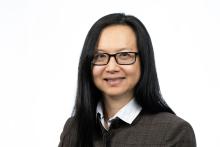
Breaking Barriers in Physics: Invited Talk Margaret Cheung
Invited talk: 8:36 – 9:12 a.m. CST, Location: Auditorium 3
Session: M45: Breaking Barriers in Physics
PNNL Presenter: Margaret Cheung
Summary: PNNL researcher Margaret Cheung has been invited to give a talk on the topic of “Breaking Barriers in Physics”. READ MORE.
Controlling Surface Oxidation of Superconducting Circuit Materials
Presentation: 10:36 – 10:48 a.m. CST, Location: 200CD
Session: M47: Superconducting Qubits: Metal Films I
PNNL Author(s): Mohammad D Hossain, Peter V Sushko
Summary: Achieving large-scale quantum computations with superconducting quantum circuits, particularly those based on transmon qubits, demands significant improvements in qubit coherence time. In recent advancements, tantalum has emerged as a leading candidate, outperforming traditional counterparts in terms of coherence time. Despite its promise, the presence of an amorphous surface tantalum oxide layer poses a challenge, potentially introducing dielectric loss and limiting the coherence time. READ MORE.
Pressure-Dependent Collapsibility of Proteins: The Impact of Topology and Length
Poster Presentation: 11:30 a.m. – 2:30 p.m. CST, Location: Hall BC
Session: N00: Poster Session II
PNNL Author(s): Margaret Cheung
Summary: Many efforts have been made to find the physics that guides amino acid sequences to fold to their native structure. It has been shown that the “foldability” of a sequence is directly related to its “collapsibility”. Thus, studying the “collapsibility” of a sequence is essential to understand its folding. READ MORE.
Multiscale Molecular Modeling of Polymer-Based Additive Manufacturing
Presentation: 12:06 – 12:18 p.m. CST, Location: 101G
Session: N26: Surfaces, Interfaces, Thin Films, and Coatings
PNNL Author(s): Bradley S Harris
Summary: Light-driven and photocurable polymer-based additive manufacturing (AM) has enormous potential due to its excellent resolution and precision avoiding the typical layer by layer approach. Acrylated resins that undergo radical chain-growth polymerization are widely used in photopolymer AM due to their fast kinetics and serve as a departure point for developing other resins for photopolymer-based AM technologies. READ MORE.
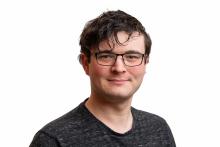
Climate change and crops: How high-performance modeling of bacterial-fungi communities can improve food security and biofuel production in an ever-changing climate
Presentation: 12:54 – 1:06 p.m. CST, Location: 103C
Session: N37: Microbial Communities II
PNNL Presenter: Connah G Johnson
Summary: Climate change threatens the makeup of our environment and will place pressure on current agricultural practices throughout the USA and beyond. This necessitates the development and implementation of techniques to optimize crop growth in current agricultural setups and to further enable crop growth in previously inhospitable regions. READ MORE.
Evaluating Interfacial Free Energy Calculation Methods Using Classical and Ab Initio Molecular Dynamics
Presentation: 4:00 – 4:12 p.m. CST, Location: M101ABC
Session: Q20: Frontiers in Growth for Applications II
PNNL Presenter: Michael D LaCount
Summary: Interfacial free energies are directly linked to the growth speed and shape of crystalline materials. Several methods exist to estimate the interfacial free energy. In our work, we focus on comparing interfacial free energies found through the cleaving method, test area method, and the use of capillary-wave theory. READ MORE.
Presentations, workshops, and chaired sessions on Thursday, March 7

Probing the Primary Solvation Shell of Hydroxide and Observing Spin-Orbit Excited Dipole-Bound Resonances Using Cryogenic Photoelectron Spectroscopy
Presentation: 8:00 – 8:36 a.m. CST, Location: 101F
Session: S25: Hydrogen Bonding Interactions and Dynamics: Water and Aqueous Systems
PNNL Presenter: Xue-Bin Wang
Summary: Size-selective cryogenic photoelectron spectroscopy coupled with electrospray ionization is a powerful experimental technique to investigate electronic structures, energetics, and proton transfers of a wide variety of hydrogen bound clusters. Our latest research includes probing the primary hydration shell of hydroxide and electronic Feshbach resonances of arginine-iodide anion clusters. READ MORE.
Applications of projection algorithm for state preparation on quantum computers
Presentation: 9:12 – 9:24 p.m. CST, Location: 200G
Session: S49: Advances in Quantum Algorithms for Near-Term Applications
PNNL Author(s): Ang Li
Summary: In this talk we will discuss applications of a recently developed algorithm for state preparation Phys. Rev. C 108, L031306. After reviewing the algorithm and its scaling properties, we will discuss its application for state preparation for 2D Heisenberg Hamiltonians on a squared lattice and for some realistic nuclear physics Hamiltonians. READ MORE.

PTM-Psi: A Python Package to Facilitate the Computational Investigation of Post-Translational Modification on Protein Structures and their Impacts on Dynamics and Functions
Presentation: 3:12 – 3:24 p.m. CST, Location: 103C
Session: W37: Multiscale Modeling and Molecular Assemblies
PNNL Presenter: Margaret Cheung
PNNL Author(s): Margaret Cheung, Daniel Mejia-Rodriguez, Hoshin Kim, Natalie Sadler, Xiaolu Li, Pavlo Bohutskyi, Marat Valiev, Weijun Qian
Summary: Protein post-translational modification (PTM) occurs after a protein has been synthesized from its genetic template and involves chemical changes to its specific amino acid residues. Despite the central role of PTM in regulating molecular interactions, particularly those driven by reversible redox reactions, it remains difficult to interpret PTMs in terms of protein dynamics and function because there are many combinatorially enormous methods to modify the amino acids in response to changes in proteins’ environment. READ MORE.
Experiment and simulations reveal residue details for how target binding tunes calmodulin's calcium binding properties
Presentation: 3:24 – 3:36 p.m. CST, Location: 103C
Session: W37: Multiscale Modeling and Molecular Assemblies
PNNL Author(s): Margaret Cheung
Summary: Calmodulin (CaM) is the main calcium (Ca2+) binding protein that transduces the calcium signal to numerous downstream proteins including Ca2+-CaM dependent protein kinase II (CaMKII). The affinity of CaM for CaMKII increases by over 3000-fold as Ca2+ binds to CaM and in turn the affinity of Ca2+ for CaM increases by many folds as a result of CaM interactions with CaMKII. READ MORE.
Unraveling the Structure of Cofilin Oligomers: Insights into Actomyosin Network regulation through Coarse-Grained Molecular Dynamics
Presentation: 5:36 – 5:48 p.m. CST, Location: 103C
Session: W37: Multiscale Modeling and Molecular Assemblies
PNNL Author(s): Margaret Cheung
Summary: The actin-binding protein cofilin occupies a pivotal role in the modulation of the actomyosin network dynamics. Through the effective severing of actin filaments and facilitation of actin monomer recycling, cofilin significantly contributes to the structural rearrangement of the cellular cytoskeleton. READ MORE.
Presentations, workshops, and chaired sessions on Friday, March 8
Growth mechanism(s) of SrTiO3 films on graphene-covered crystalline substrates
Presentation: 9:12 – 9:24 a.m. CST, Location: 205C
Session: Y57: Fabrication and Characterization of Freestanding Complex Oxide Membranes
PNNL Author(s): Bethany Matthews, Steven Spurgeon, Scott A Chambers
Summary: The use of substrates coated with an ultrathin two-dimensional material may bring several advantages when it comes to growing freestanding membranes. These advantages include substrate reusability, simplified film exfoliation, and the potential for reducing dislocation density in the epitaxial layer. READ MORE.
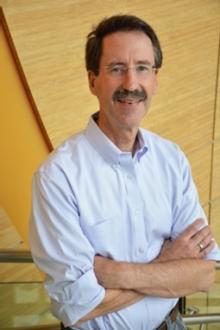
Predicting Cellular Regulation from Natural Selection, Thermodynamics, and Control Theory
Presentation: 10:00 – 10:12 a.m. CST, Location: 103C
Session: Y37: Physics of Learning and Adaptation in Living Systems
PNNL Presenter: William R Cannon
Summary: Predicting cellular regulation is a grand challenge in biology. This challenge can be successfully addressed by taking advantage of the fact that natural selection selects for the most fit or optimal individuals out of all solutions. Fitness is a non-equilibrium thermodynamic emergent property and can be formulated from a thermodynamic perspective to obtain the most likely kinetic parameters, and then information derived from data can be used to constrain the solution space. READ MORE.
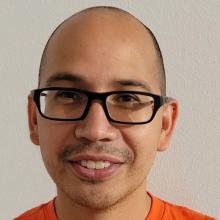
evGW ionization potentials at G0W0 cost
Presentation: 12:30 – 12:42 p.m. CST, Location: 103E
Session: Z39: Theory and Computation; Surfaces and Interfaces
PNNL Presenter: Daniel Mejia-Rodriguez
PNNL Author(s): Daniel Mejia-Rodriguez, Niranjan Govind, Edoardo Aprà
Summary: The poles of the single-particle Green’s function correspond to the electron addition and removal energies probed in direct and inverse photoemission experiments, and thus provide a direct link between theory and experiment. One way to extract such energies is to use the GW approximation to the self-energy, a popular method in electronic structure theory. READ MORE.
Hybrid MBE Growth and Transport in CaSnO3-based Heterostructures
Presentation: 12:18 – 12:30 p.m. CST, Location: 205C
Session: Z57: Towards Applications of Complex Oxides: Catalysis, Transparent Conductors and Ionic Conductivity
PNNL Author(s): Minju Choi, Scott A Chambers
Summary: CaSnO3 stands out among alkaline-earth stannates due to its exceptionally wide bandgap of approximately 4.6 eV and its ability to be electron-doped. This presentation offers a comprehensive examination encompassing the growth process, structural characterization, and temperature-dependent electrical transport measurements of CaSnO3 films. READ MORE.
First-principles study of the tritium formation in γ-LiAlO2 pellets and diffusion into Zircaloy-4 getter
Presentation: 1:42 – 1:54 p.m. CST, Location: 103E
Session: Z39: Theory and Computation; Surfaces and Interfaces
PNNL Author(s): David Senor, Andrew M Casella
Summary: Tritium (T) occurs only in trace amounts in the Earth’s environment. To make T in abundance, nuclear reactions are needed. In tritium-producing burnable absorber rods (TPBARs), γ-LiAlO2 pellets enriched with 6Li isotope are used to produce T. READ MORE.